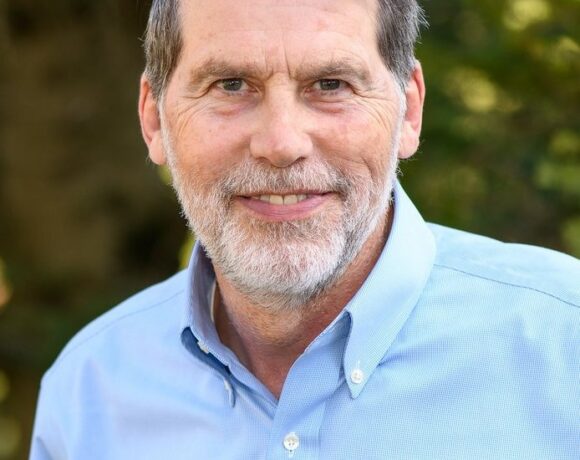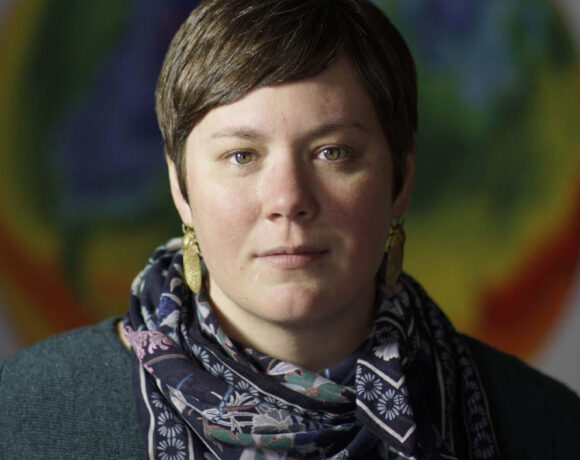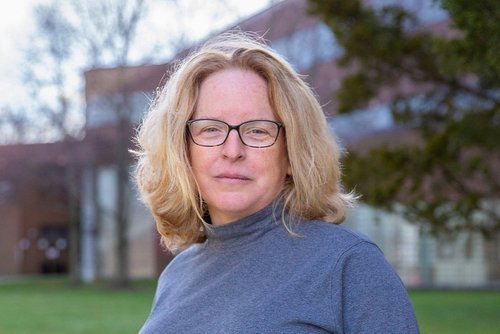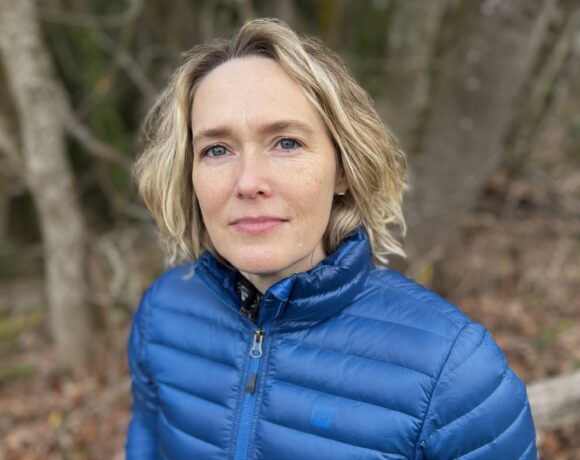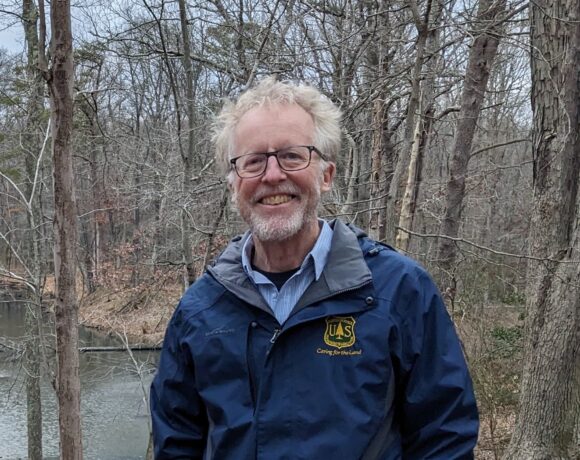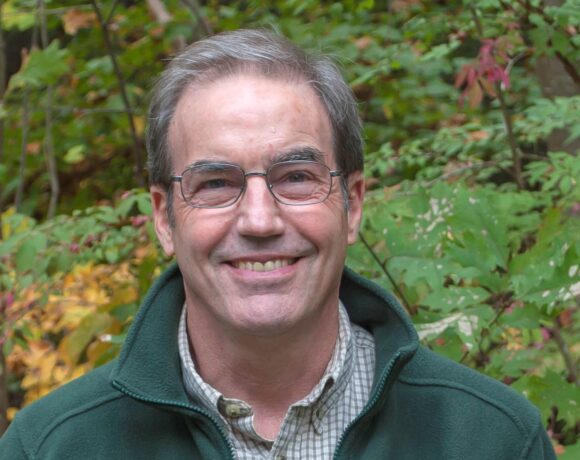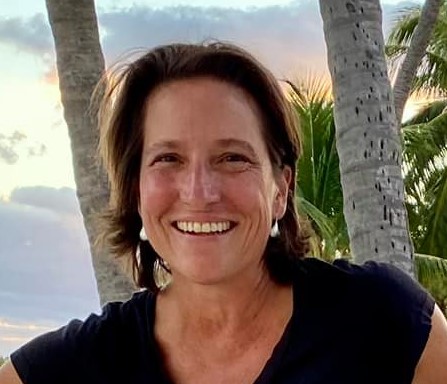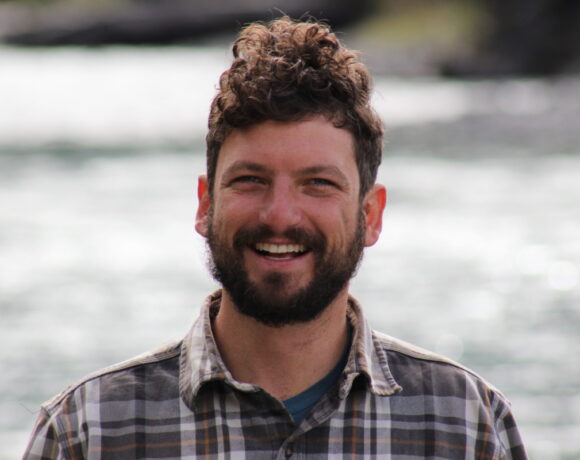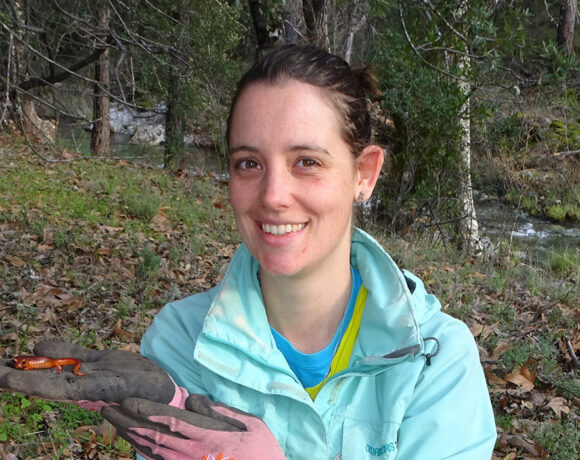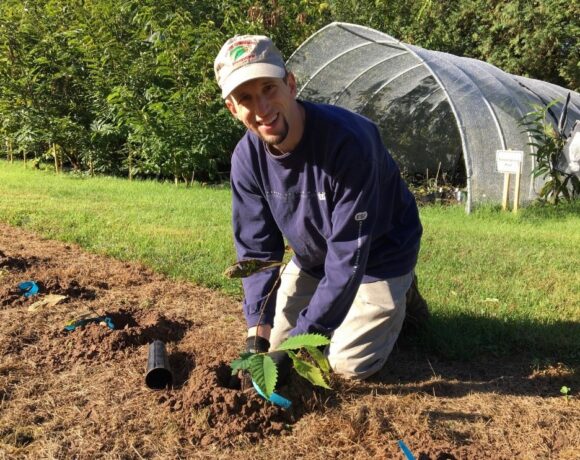This month, we connected with Dr. Angela Fuller, leader of the USGS New York Cooperative Fish and Wildlife Research Unit and Professor Courtesy, Natural Resources and the Environment at Cornell University. While her work spans a variety of wildlife and conservation issues across the globe, a central theme of her research is to find solutions to social ecological problems that help guide management of natural resources.
Watch the interview here:
View transcript:
Justin Dalaba (JD) – Alright, hi Angela, thanks so much for being here for our Spotlight interview today and we appreciate you taking the time to sit down and tell us about your work. So, for those who are unfamiliar with you just to kind of dive right in, go ahead and start out by telling me a little bit about yourself, your work, and your role with Cornell, as well as the New York Cooperative, Fish and Wildlife Research Unit.
Angela Fuller (AF) – Alright, great Justin, thanks for having me here. So, I’m the leader of the New York Cooperative Fish and Wildlife Research Unit, and I’m also a professor in the Department of Natural Resources and the Environment at Cornell. Should probably give you a little background about the Cooperative Fish and Wildlife Research unit. Many people aren’t necessarily familiar with it. The New York unit is one of, I don’t know what the current number is. I think 42 units across 40 states in the United States, so there’s new units that are kind of being added all the time, but the Co-op unit basically facilitates research and technical assistance between natural resource agencies and universities, and we also contribute to graduate education in both fisheries and in wildlife sciences. So, we work with agencies helping to address research needs. So that’s kind of a background of the Co-op unit. I think you asked about the kind of general nature of my research. I guess the major theme of my work is I work to find sustainability solutions to solve social ecological problems.
JD – Yeah, that’s awesome, and so I know your research program – Your lab as a whole really spans a variety of wildlife and conservation issues actually across the globe. So, tell me a little bit about the intersection of your work with invasive species and what kinds of questions around that you’re working to explore, or have explored.
AF – Yeah, sure, so I guess there’s two projects that directly intersect with invasive species. One is one that we’re currently working on. Right now, we’re finishing up and that’s related to the invasive, spotted lanternfly, and that project is a collaboration with the NY Invasive Species Research Institute, Entomologists at Cornell, the New York New Jersey Trail conference and a host of other collaborators. And that project, it’s an early detection rapid response project where we’re trying to figure out monitoring solutions for spotted Lanternfly and when we started the project in New York, there were no spotted Lanternfly infestations, and so we were trying to come up with ways to monitor spotted Lanternfly before they become a problem in New York and we turn to the use of detection dogs. So, these are dogs that are trained to smell the egg masses of spotted lanternfly. And we did this in Pennsylvania and New Jersey. We used these detection dogs and we’re comparing the effectiveness of the detection dogs versus humans and being able to find the spotted lanternfly egg masses and so we use this modeling method called occupancy modeling, which allows us to estimate the probability of occupancy of these spotted lanternfly egg masses as well as the detection probability, or how well the dogs are doing at being able to detect the egg masses, given that they’re there. So, we compared humans and dogs. The other project is one that’s still somewhat in the works, and that that one is, I guess, a larger one where we’re thinking about all invasive species in the state of New York. And so, the problem is, how do we go about thinking about managing all of the 250 plus species in the state of New York? And of course, you know we have a budget. So how do we manage the species under these budget constraints? What species do we work on? Where do we go within the state to manage these invasive species? If we get there, what kind of management actions do we implement? And so, this was a large spatial optimization problem where it required us thinking about what are the needs of for management. You know, on the ground. And you know, do we think about search and destroy and prevent as a management option or direct intervention? Or, you know, no action is also a potential option that would be on the on the table. So depending on what’s important to you or I should say. What’s important to the managers? We used a decision making framework to try to think through this, to identify the objectives of the managers and characterize the impacts of these invasive species to things that managers care about to the environment to industry, to recreation, to human health and safety. And then we tried to figure out ways where we could put resources where it would maximize the cost effectiveness of the different actions that we were looking into. So it was a collaborative project with the invasive Species Research Institute, with iMapInvasives, the New York Natural Heritage Program, Computer Science Department at Cornell, and then we work very closely with the PRISM managers throughout this and really relied on their expert knowledge to be able to think about, you know, there’s all these 250 plus species. What’s the cost of management for each one of these species? How effective would the management actions be for each of the species, and how might these invasive species be spreading through time? And then we came up with a spatially optimal plan for New York.
JD – Yeah, that’s awesome. It’s great to have you involved in those and you mentioned two you know hugely impactful projects with a long list of collaborators, a lot of work going into that, and I want to start by I guess going a little deeper into the spotted Lanternfly project. And correct me if I’m wrong on this, but it’s the only effort, really to use occupancy modeling for the detection of an insect pest. So from that work, how can that be applied elsewhere to other species, whether invasive or otherwise.
AF – Yeah, so I think the framework that we developed has broad applications to any species. So, basically the first the you know using these detection dogs is one thing. So, the detection dogs can be used on any species, not just spotted lanternflies. So they might be other species, whether you know they’re invasive or threatened or endangered, and the modeling method using occupancy modeling to be able to separate out the you know, occupancy versus the detection process, really again, you know, can be used on any taxa.
JD – Yeah, definitely. And So what if you don’t mind sharing what are some of the variables that you found through that work that affects, say, presence and occurrence of spotted lanternfly either in agricultural areas or natural areas.
AF – Yeah, one of the things that came out important in terms of the occupancy is that the occupancy of the spotted lanternfly egg masses was much higher the closer – So we surveyed in vineyards – The closer the vineyard transects were to the edge of the forest, so if you think about spotted Lantern flies, you know the adults being associated with forested areas. Tree of heaven. The closer the vineyard is to that forest area where the adults would be coming out of the forest into the vineyard, that’s where we had the highest occupancy probability. So, if we’re thinking about searching before there’s an infestation, if you were searching vineyards, you would want to be searching closest to the forest, because that’s likely where there’s going to be a higher occupancy probability. The other thing that we found, we compared the use of the scent detection dogs and humans. And we did it in both the forested areas in the vineyard areas and what we found is that the humans were good in the vineyards at being able to detect the egg masses because we use visual search to be able to find the egg masses, so it’s pretty easy when you’re searching up and down a vine or a pole in the vineyard. The dogs are also good at being able to detect those, but you know, kind of humans have this little extra search. Being able to search visually in the forest, the humans ability declines relative to the dogs because it’s extremely challenging to find the egg masses in the forests, and that’s where the dogs have the real strong advantage because they’re using their olfactory senses to be able to try to find the egg masses. Whereas us as humans, we can’t see these camouflaged egg masses in the forest. So, dogs have really great potential for early detection, kind of efforts in the forested areas.
JD – Right, yeah, so super valuable insights coming out of that project and especially being able to combine that with the occupancy modeling to sort of infer in these unsampled areas – What you know, presence or abundance might look like. So I want to shift now to the bigger broader picture, you know prioritization and decision making work that you’ve been involved in and so. Because a lot of your research in general is aimed like a central theme is to help guide natural resource and policy outcomes. I wanted to hear your perspective on if you had like some main takeaways. What is the more most important thing for managers to know about your research and the outcomes of it?
AF – The spatial optimization problem, I guess if we thought about decision making in general, there’s a lot of similarities between different kinds of natural resource management problems and the one on invasive species. There’s a lot of competing objectives, and it’s a challenging decision to be able to make, right? But what we can do is we can break it apart like we did in the decision analysis framework where we identify the objectives and then we can come up with reasonable alternatives that allow us to achieve those objectives. So, it’s again this kind of way of thinking that allows us to solve these very complex problems. So, it’s very transferable to any kind of decision problem that might have a lot of complexities involved in it.
JD – Yeah, absolutely. So now I wanted to just kind of transition or I guess take a take a step back a little bit and I wanted to know more about you. So how did you land where you are today? Do you have sort of a personal path that brought you into this sort of research that’s driven to inform natural resource management?
AF – Yeah, I guess if I think back to. I guess once I developed my major, you know when I was in in my undergrad, I started becoming really interested in trying to find solutions to, you know, complex sustainability or natural resource problems. And when I first started out in my master’s work, I worked on the effects of forest harvesting on wildlife species and how to balance conservation of different species with the needs of forest, industry. And so that brought up these tensions that existed between trying to balance multiple competing objectives. Then that led me to start thinking about landscape planning and once I started thinking about how to basically effectively do this on the landscape, I started learning about decision making approaches like structured decision making and adaptive management. Which I tend to use a lot in my work now. And through that kind of thinking, or avenue, it became clear to me that in order to make change and to influence policy, I needed to work with decision makers and basically the agencies that are responsible for managing species or managing landscapes. And I guess it became a natural evolution to have me kind of land where I am today doing this kind of interdisciplinary applied research that’s really focused on informing conservation and management.
JD – Yeah, it’s so important and now you’ve been, you know, recognized for your long-term contributions to conservation and management and natural resources. So, what do you foresee or hope will be the long-term impact of your work. Do you have kind of this high-end goal that you see the collection of your work contributing to?
AF – I guess if I were to have to have one statement about what I hope, I guess I would hope that it changes the way that our world’s resources are managed and conserved. The work that I do, you know, I try to have it make an impact, have it make a change in current practices. The other thing that I would bring up is, you know, as I mentioned, I worked a lot in these decision-making approaches and training. You know students and agencies to think about problems from this kind of structured decision science approach and so in the future I hope that these decision science ways of thinking become more widely applied and used.
JD – Yeah, absolutely. And so, what lies ahead for you and for your research interests? Do you have anything exciting on the horizon that you’d be willing to share?
AF – Let’s see, yeah, I guess there’s quite a number of projects that I have upcoming, you know, kind of long term, I’ll keep maintaining this. You know, I tend to have a lot of work that’s very local, and then I also have some international research. So you know, continuing to maintain that local to global reach with my research. And you know, I’m always interested in fostering new collaborations, working with others to solve these complex sustainability problems, and the new projects that I have coming up: I have a, let’s see, a project on Bobcat harvest modeling. And that includes testing some new field methods for Bobcats, using hair snare puppies is noninvasive search method so kind of like the noninvasive method that I described with the spotted lanternfly where we’re using the detection dogs. Here we’re using hair snare puppies to try to get a hair off the bobcat and do some genetic analysis. The other one is a statewide survey of breeding birds to estimate bird abundance, and we’re using these acoustic recording devices as well. A third one is a launch of the statewide mammal monitoring network in New York and this will involve a very large citizen science approach using camera trapping. And then, I guess a little farther afield from New York is a cheetah monitoring study, and this is in the Horn of Africa to understand cheetah abundance, cheetah diet and then also aspects of cheetah trafficking and poaching and human-cheetah conflict.
JD – Amazing what a range of really cool species to work with and in really interesting conservation issues.
AF – Yeah, I get to work on cool things. That’s why I love my job.
JD – Absolutely well, it’s been awesome to get a quick glimpse into your work. That was kind of the main topics I wanted to hit, but I wanted to ask you. Is there anything else that you wanted to share that that we didn’t touch on in this short interview?
AF – Let’s see, I guess you know we didn’t really touch on. You know, as a scientist and leader of the Co-op unit and Professor at Cornell. One other part besides the research is the teaching and mentoring, and that’s one of the parts of my work that I really value is kind of training the next generation of sustainability scholars. And I did mention collaborations quite a few times. The work that I do really isn’t possible without working with excellent collaborators, which I’ve been very fortunate to have, as well as excellent graduate students and postdocs, and so the graduate students and postdocs. They always go off and they make change in the world. And that’s extremely rewarding to me.
JD – Yeah, absolutely and well said that’s what it’s all about. Collaborations and extending that work to the next generation of scientists. Well, Angela, thank you so much for taking these short few minutes to sit down and give us a bit of insight into your work and your perspective on how this research is so important for natural resource management. We’ll be sure to link to your labs website and if you have any recent publications you wanted us to share, we’ll be sure to link to those as well with this post, but I wanted to thank you again for your time and. Yeah, we look forward to sharing this with our audience.
AF – All right, great thanks Justin. Thanks for having me.
For more info, visit:
More researcher spotlights:



